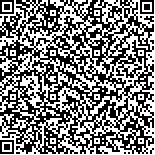下载中心
优秀审稿专家
优秀论文
相关链接
摘要

本文在SAR图像多年应用研究的基础上,概述了国际上2种常用的SAR图像正射纠正数学模型——F.Leberl模型、Konecny模型,同时试验了SAR图像多项式纠正模型,分析了这3种模型的特点,利用中国自制的机载SAR图像和美国的GEM SAR图像分别进行了数字几何纠正实验。通过对实验结果的分析比较,为SAR图像应用于突发性自然灾害的实时监测和评估,推荐了一种形成较为简单、适应性较好的正射纠正模型。
SAR(Synthetic Aperture Radar)images have been widely applied because of the development of SAR remote sensing techniques. The theories and techniques of SAR image rectification have been paid attention to in the application field of RS(Remote Sensing)and GIS(Geographic Information System). It was noticed that why there are different mathematical models in describing the relationship between SAR image points and their corresponding ground points, and which one is better. Based on a long time study on SAR image application,this paper recapitulated three mathematical models—F. Leberl Model,Konecny Model and Polynomial Model,which were ever used for the SAR image processing in the world. The characteristics of the three models were analyzed and tested in the experiments of rectification with the image information acquired by China-made SAR system and America-made GEM system. After the experimental results were compared, it comes to some conclusions: 1.The simplest model—Polynomial Model adapts to the rectification with the SAR images of flat terrain regions under the condition of enough control points distributed averagely,in which the amount of calculation is the least and the accuracy of rectification is acceptable. 2.The accuracy of rectification acquired by Leberl Model is better than the one acquired by Konceny Model—the simulation of traditional form. 3.Leberl Model is more adaptive and simpler than Konceny Model. 4.Leberl Model was recommended for real-time monitoring and assessing natural disaster

